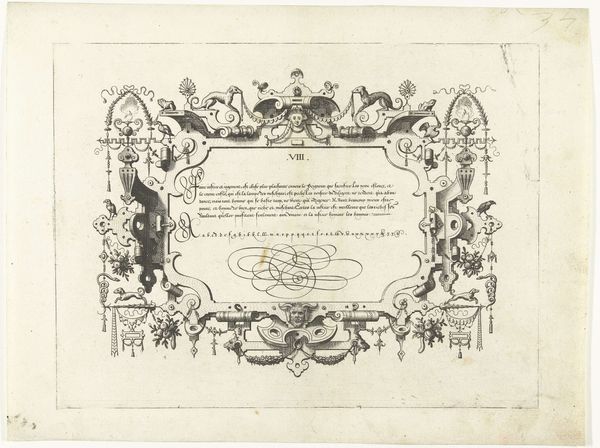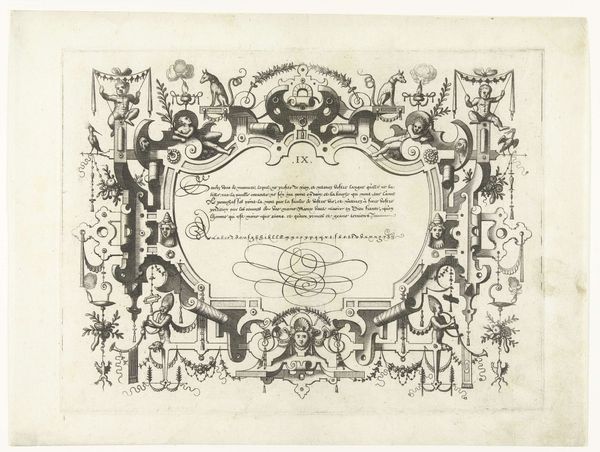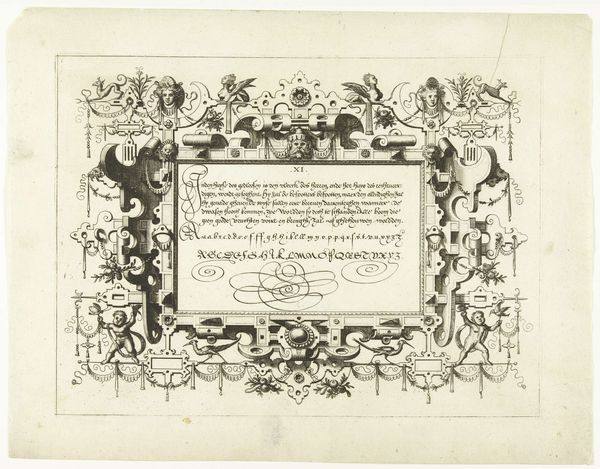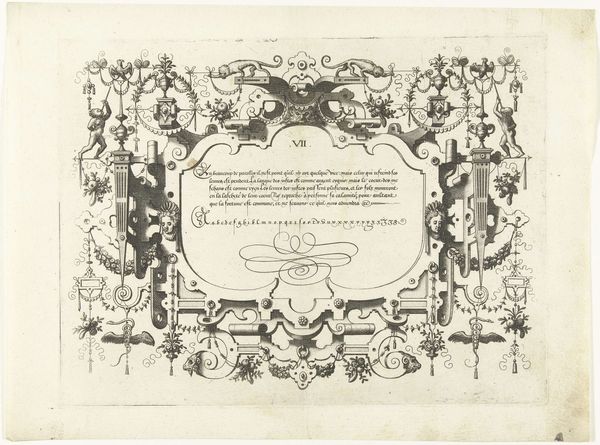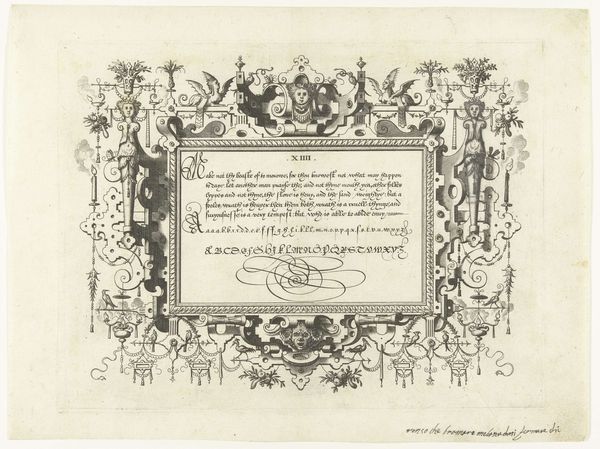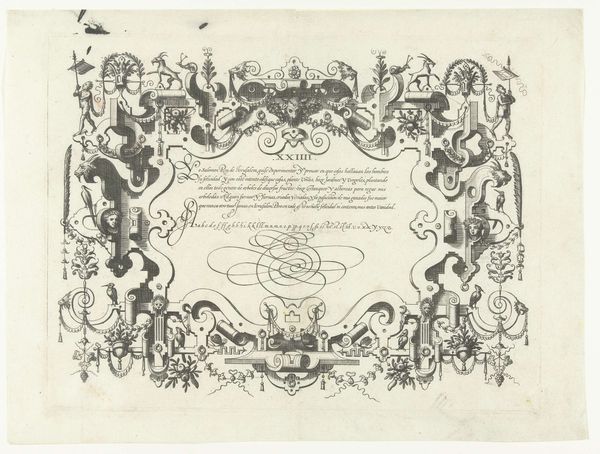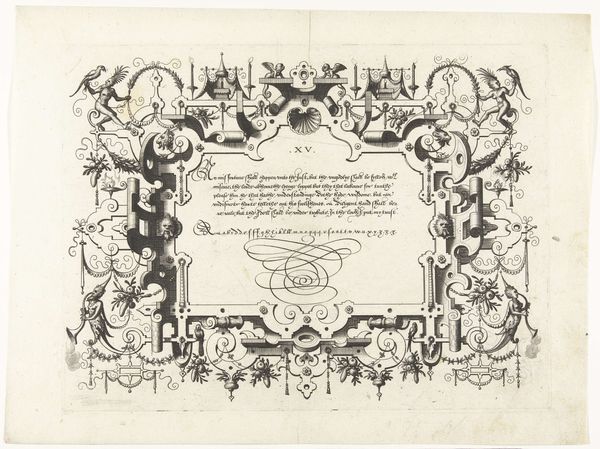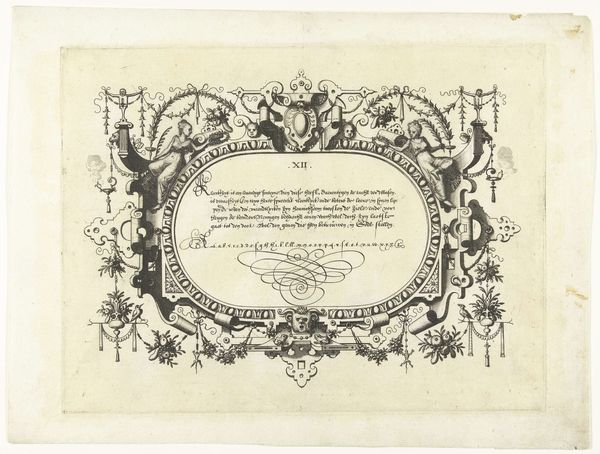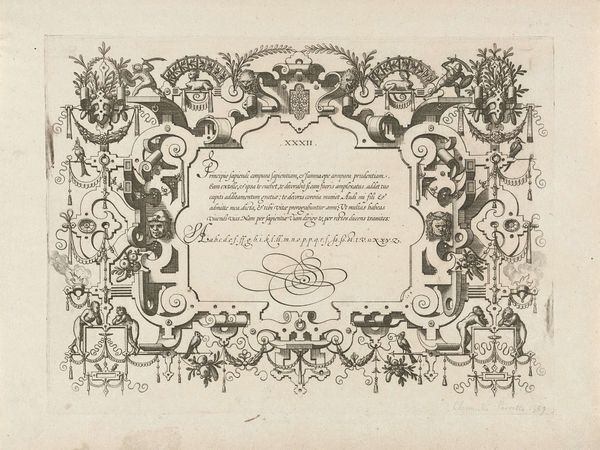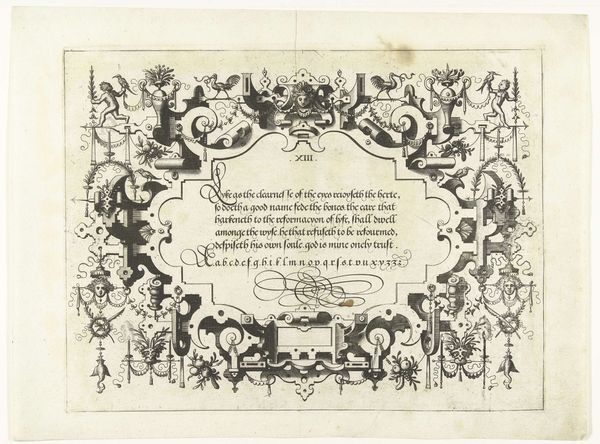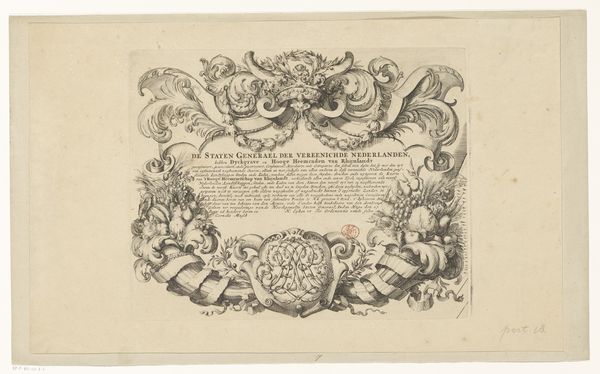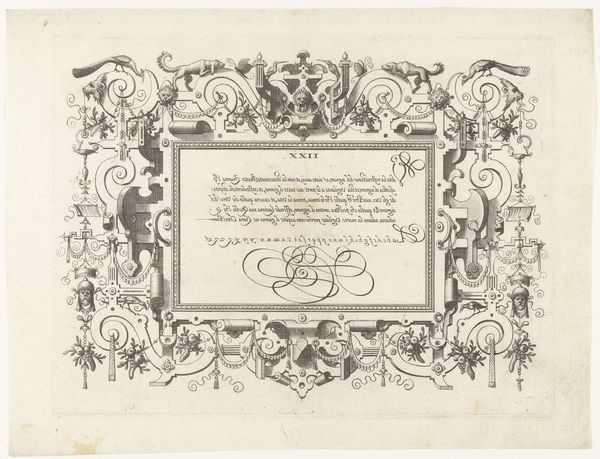
Cartouche met kalligrafie, erboven twee vogels en twee paarden 1569
0:00
0:00
johannesoflucasvandoetechum
Rijksmuseum
drawing, print, ink, engraving
#
drawing
#
pen drawing
# print
#
pen illustration
#
pen sketch
#
old engraving style
#
bird
#
figuration
#
11_renaissance
#
personal sketchbook
#
ink
#
ink drawing experimentation
#
pen-ink sketch
#
horse
#
pen work
#
sketchbook drawing
#
sketchbook art
#
engraving
#
calligraphy
Dimensions: height 212 mm, width 282 mm
Copyright: Rijks Museum: Open Domain
Curator: This intriguing engraving, dating back to 1569, is titled "Cartouche met kalligrafie, erboven twee vogels en twee paarden"—or, "Cartouche with calligraphy, above it two birds and two horses." It's currently housed in the Rijksmuseum. Editor: My first impression? It's wild! Like a page torn from a surrealist's sketchbook. So intricate, yet with these bold animals sort of casually hanging out above a script that looks both formal and totally free-form. Curator: The artists behind it were Johannes or Lucas van Doetechum. It's a prime example of Renaissance printmaking, revealing much about the era's values and aesthetic preferences in textual presentation. The interplay between ornamentation, the written word, and the natural world invites complex interpretive frameworks, intersecting art history with the period's socio-political contexts and ideologies. Editor: Definitely. And there’s something kind of rebellious about the design, a spirit of challenging convention hiding behind what at first seems quite classical. The cartouche feels less like a frame and more like…a playground for ink. And what is the function of those two monkey-esque humanoid creatures, in each lower corner of the composition? Curator: One interpretation frames those small humanoid creatures as symbols of the artist's own role in navigating the demands of patronage. The fact that we’re unsure whether the artist was Johannes or Lucas speaks to their historical positioning—a professional artisan rather than a celebrated individual, often overlooked by dominant historical narratives. Editor: Interesting. I can almost imagine them playfully pushing against the formal constraints imposed on them, literally supporting the cartouche. Curator: Exactly! And it also raises some deeper questions about labor and artistic freedom. Looking at the materials and the techniques that the van Doetechums adopted here also situates this artwork within its original function: maybe it’s meant to be a study or an exemplar for younger artists mastering printmaking. Editor: This really reminds me of my own sketching process—layers of ideas building on each other. And just knowing this was made over four centuries ago, by human hands and creative intention, adds another dimension. Like time travel through art. I now wonder who, in centuries from now, will contemplate artworks from our own era. Curator: I agree completely. This little "Cartouche" becomes an important artifact not just about artistic skill, but a poignant reflection of a past world—and I like how you remind us how artworks like this continue to inspire, prompting us to reconsider who we are and how we relate to one another today.
Comments
No comments
Be the first to comment and join the conversation on the ultimate creative platform.
